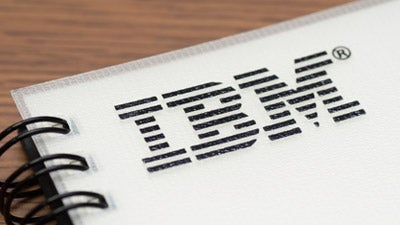
As defined by inbound pioneers Hubspot, inbound marketing is a holistic, data-driven strategy that helps organizations attract and convert visitors into customers by providing personalized, relevant information and content instead of interruptive messages. With its focus on the customer experience, inbound represents an evolutionary approach to marketing.
As a rule, profound changes in consumer behavior necessitate equally profound changes in business best practices. Think of it as survival of the fittest: businesses that fail to evolve stagnate, many eventually die out. Those that do evolve survive, some even thrive.
Just ask IBM.
IBM and Inbound
Founded over 100 years ago in 1911, IBM grew from a small player to a dominant force in the early computing landscape—in 1964, IBM produced 70% of all computers. In the 70’s and 80’s all this changed with the rise of the personal computer and the client server, technologies which allowed smaller, nimbler companies to compete. By 1992, IBM looked to be the first major casualty of the emerging digital age. In that year, the company lost 8 billion dollars—more money than any company in US history.
Faced with an existential threat, IBM chose to listen to its clients, who were in need of a company that could combine disparate computing technologies into integrated solutions. By doing so, IBM not only survived but positioned itself to thrive in the digital age.
In November of 2010, early inbound marketing advocate David Meerman Scott (co-author, along with Hubspot founders Brian Halligan and Darmesh Shah, of Inbound Marketing: Get Found Using Google, Social Media, and Blogs) interviewed Ben Edwards, then VP of Digital Strategy and Development at IBM, on the company’s decision to transition from outbound marketing to inbound. At the time, IBM was spending countless millions on various outbound marketing initiatives, which included 58,000 marketing activities, 8,500 events, and 4.5 million people targeted with outbound marketing.
Edwards knew IBM had to evolve and embrace digital technologies such as the Internet and social media. He cited the fact that 96% of IT buyers were using search throughout the buying process. He was eager to realign IBM’s marketing with digital as its core.
Edwards was also an early believer in the power of social media to increase consumer engagement and foster brand loyalty. Realizing that nearly half of IBM’s 400,000+ employees were connected to social media, Edwards saw the potential:
“If the average person has 150 connections on their social pages, that’s millions of connections…Imagine if IBM could mobilize that group of people. Imagine if people could excite loyalty and advocacy.”
He was right. IBM’s transition to inbound marketing was so successful the company eventually decided to leverage proven inbound best practices to help other companies do the same, rolling out its IBM Interactive Experience service in January of 2014. Buoyed by its singular focus on the customer experience (the IBM Interactive website boasts 23 patents in customer experience alone), in May of this year the IBM Interactive Experience was named the largest global digital marketing agency by Ad Age.
Over 100 years after its founding, IBM is still proving it knows how to evolve with the times to survive and even thrive. As the business world moves to the cloud, 47 of the top 50 companies in the Fortune 500 are supported by IBM’s SaaS solutions.
Talk about an inbound success story.
This article was originally published by SyneCore
2517 Views












